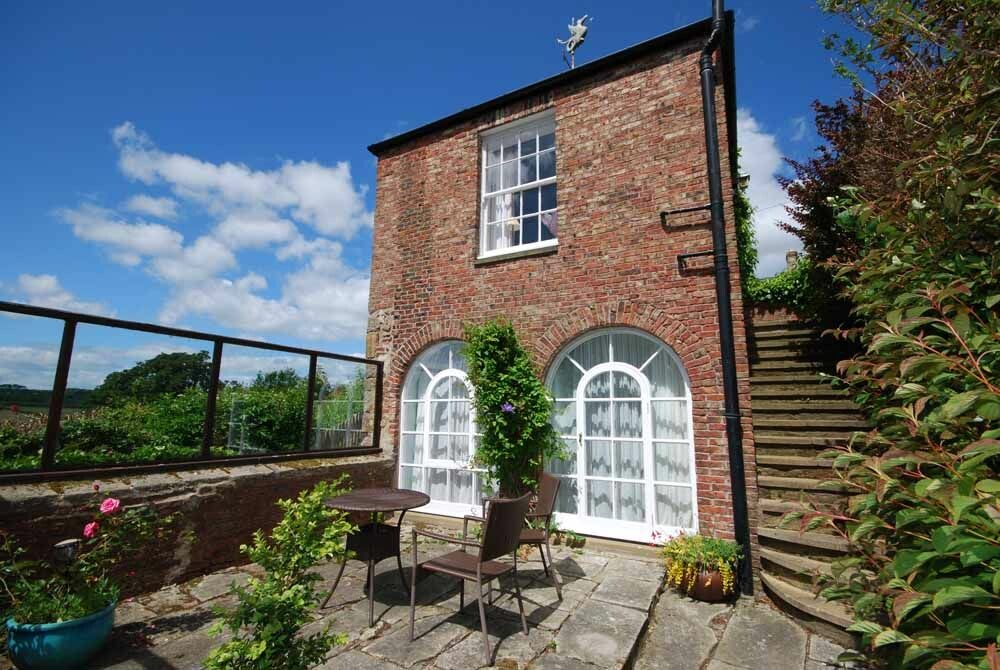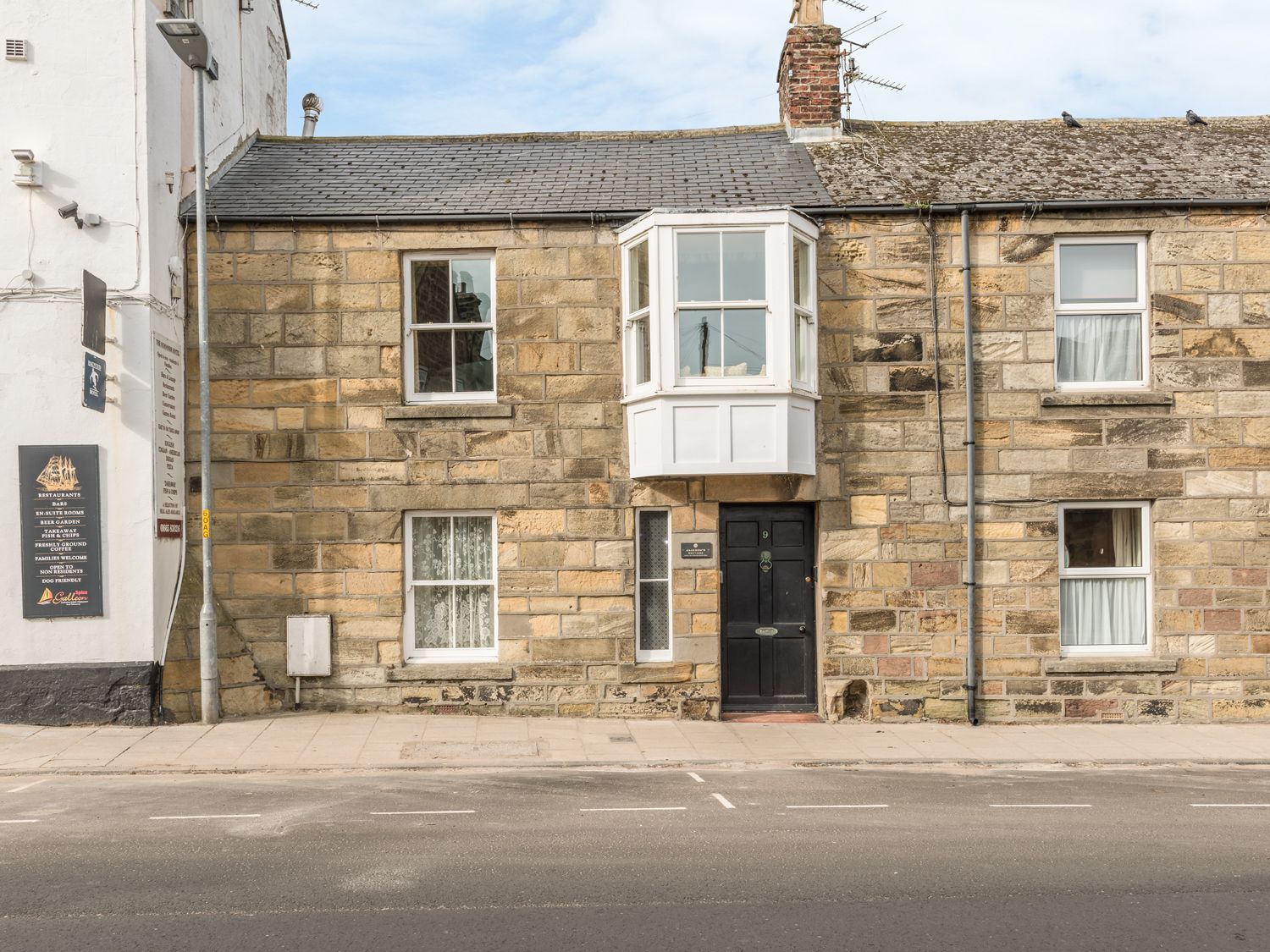Alnmouth
Shhhh, Keep this Small Coastal Village to Yourself!
At the point
where the River Aln empties into the North Sea lies the small village of
Alnmouth. Once a busy port, it's now a much-loved place for a seaside holiday. Which you'll understand the moment you see the large
sandy beach! It was this beach that drew us to Alnmouth on a sunny March Saturday
morning for breakfast with a view. It wasn’t our first visit. We'd been here around twenty-five years ago, when a rather eerie layer of fog - sea fret - hung just above
the sea and sand. Unfortunately, this strange experience predates both Essentially
England and digital cameras, so we have no record of it. In a way, I suppose, we
were both hoping for a repeat of the atmospheric conditions, but this time the weather was bright and the sky a beautiful clear blue. Which is never a bad thing!
We picked up drinks and pastries from the deli on the way through Alnmouth and found ourselves a seat in the small Dr Joy’s Garden viewpoint to enjoy our breakfast. It was a real pleasure sitting there in the sun, gazing out to sea. We were joined by several small birds who initially hid in the garden's bushes, but eventually became brave enough to peck at the crumbs we had dropped around our feet. What a great way to start the day!
 Alnmouth © essentially-england.com
Alnmouth © essentially-england.comAlnmouth is more than just a port turned holiday village. As you wander along the sea front, your gaze will automatically stray to Church Hill and St. Cuthbert's Cross. The cross celebrates the place where St. Cuthbert was made Bishop of Lindisfarne.
 Church Hill in the River Aln Estuary © essentially-england.com
Church Hill in the River Aln Estuary © essentially-england.comA Little Alnmouth History
Alnmouth prospered during the 1600-1700’s as a trading port and ship building area. Its main export was grain. Many grain barns were built for storage, and some still exist after being converted into homes and halls. Strangely enough, one of the biggest imports was Guano, which was very popular as a fertiliser.
 St. John the Baptist Church in Alnmouth
St. John the Baptist Church in Alnmouth © essentially-england.com
Three events led to the closure of Alnmouth port. The first, and possibly the most dramatic, was a severe storm on Christmas Day 1806, which changed the path of the River Aln around Church Hill and out into the North Sea. Before the storm, Church Hill was connected to Alnmouth and the River Aln flowed south around Church Hill. After the storm, the river cut between Church Hill and Alnmouth.
The second event, around the 1850’s, was the arrival of trains in the Alnmouth area and these took away much of the trade.
And the final nail in the coffin for the port of Alnmouth was the 1896 sinking of the ship Joanna in the harbour area, which then made it difficult to get insurance for vessels passing through the port.
 Alnmouth Beach © essentially-england.com
Alnmouth Beach © essentially-england.comAlnmouth survived the decline of its port and resurrected itself as a holiday destination. The new trains were bringing Victorian holidaymakers to the coast, and they liked what they saw. New homes sprang up along the outskirts of the village, making the most of the fine views out to sea. Over time, Alnmouth became one of those quiet, beautiful coastal villages that people return to over and over for holidays and days out.
Walking Around Alnmouth
Leaving the viewpoint, we walked around to the Aln estuary to see the boats moored in the harbour and the Ferryman's Hut. The hut used to belong to the ferryman, who would row people across to the other side of the River Aln. The service was abandoned in the 1960’s, but the hut has been restored and is full of framed photos showing Alnmouth, the ferries and ferrymen. According to the Parish Council, it's the smallest museum in Northumberland, if not England!
 Alnmouth Harbour © essentially-england.com
Alnmouth Harbour © essentially-england.comBeyond the sand dunes protecting the town, lies the beach. And at low tide, Alnmouth beach is a vast expanse of lovely sand. After walking for what felt like miles and dipping our fingers in the North Sea, we found some rocks in which to do some “rock pooling”. From afar, the rocks had looked like they were built as a sea defence or pier. It's strange how sight can play tricks on you!
 The Sand Dunes © essentially-england.com
The Sand Dunes © essentially-england.com Rock Pools on Alnmouth Beach © essentially-england.com
Rock Pools on Alnmouth Beach © essentially-england.comTalking of sea defences, as we walked back towards the sand dunes, we passed large concrete cubes that were used to deter tanks from landing on the beach during WW II.
 View back to Alnmouth from the Beach © essentially-england.com
View back to Alnmouth from the Beach © essentially-england.comBetween the beach and the second row of sand dunes lies Alnmouth Village Golf Course. Established in 1869, it is the oldest 9-hole golf course in England! The land on which the course is laid is a 6000-year-old raised beach.
 The Alnmouth Village Golf Course © essentially-england.com
The Alnmouth Village Golf Course © essentially-england.comBesides England's smallest museum and oldest golf course, Alnmouth's other claim to fame is ... the Schooner Hotel. It is a seventeenth century coaching inn that welcomed Charles Dickens, John Wesley (English Cleric and theologian), Basil Rathbone (Played Sherlock Holmes), and King George III as its famous guests. It's also said to be one of the most haunted hotels in England.
It looked as if it had closed when we passed. Perhaps the ghosts have been too active and frightened everyone away! :-(


The Schooner Hotel - One of England's most Haunted Hotels © essentially-england.com
There is plenty of good walking around Alnmouth. Probably the most popular stroll is from the car park, around to the harbour, along the River Aln to the B1338 bridge and back in to Alnmouth. The route is about 1.6 miles, and the map is shown below.
The Northumberland Coast Path and St. Oswald’s Way passes close to the town, making Alnmouth - and its range of shops and pubs/cafes - make a useful stop.
We really enjoyed our breakfast stop and stroll around Alnmouth, and it set us up for a busy Essentially England day. It is a lovely spot along the Northumberland coast and an Area of Outstanding Natural Beauty.
Fancy a Quiet Seaside Gettaway?
I could really imagine Alnmouth as a place for some peace and reflection. Just think, you could wake up fresh in the morning and stroll to the beach and just wander. Then you’ve got the rest of the day to explore castles or go for an exhilarating walk. Sounds good to me. Here are some holiday cottage ideas…
Riverside
Sleeps 8
The Old Watchtower
Sleeps 2
Jackson Cottage
Sleeps 5
To see other holiday cottages in Northumberland click here. Or check out holiday cottages in other parts of England by clicking here.
Or, if you fancy staying in a hotel try our Booking.com search box.
Even if you stayed a month, you'd find that you don't have enough time to explore the county top to bottom and see everything it has to offer. There's plenty of history from Hadrian's Wall to Lindisfarne in the north with reams of castles and ruins in between. There are beaches and seaside towns like Craster, Alnmouth and Seahouses - and some of the best fish & chips in all of England. There are market towns like Haltwhistle, Rothbury, Bellingham, Berwick, Warkworth and Harbottle to explore. And there are hillsides to climb and the great outdoors to enjoy.
Are you feeling in need of a holiday yet? Here are a few more pages that might give you ideas...
- Berwick-upon-Tweed
- Alnwick and Alnwick Castle
- The Holy Island of Lindisfarne
- Warkworth Castle
- Dunstanburgh Castle
- Cycling in Northumberland - my favourite tandem tour EVER!
And if you want to explore more of Northumberland and its martial history, check out this Northumberland Castle Tour.
For more Northumberland sites return from Alnmouth to the Northumberland page.
.jpg)








